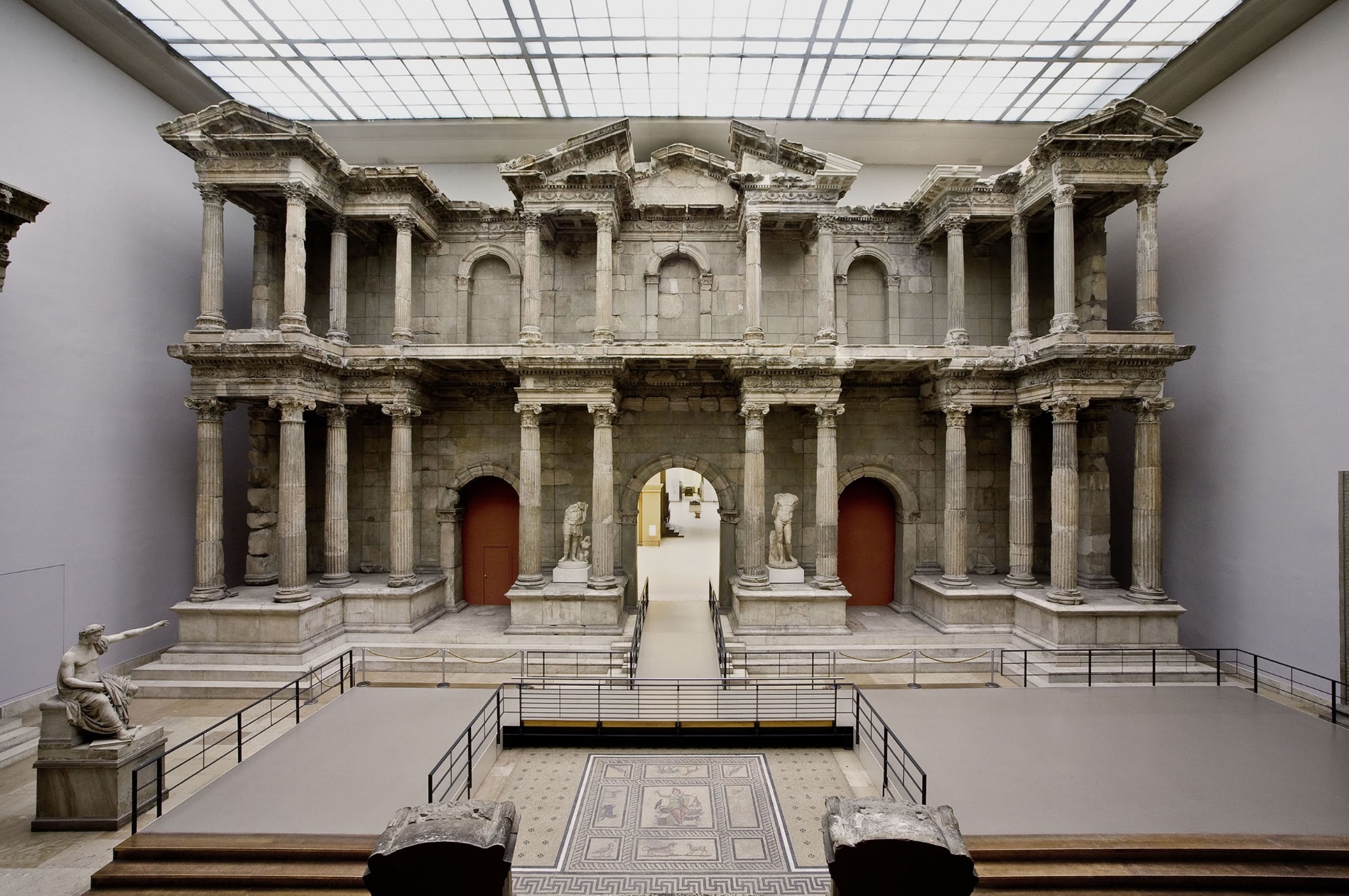
The gallery is dominated by the reconstruction of the market gate of Miletus, second only to the Pergamon Altar as the most important monument in the Collection of Antiquities at the Pergamon Museum and the only landmark of classical architecture that was rebuilt full-size inside the museum (28.92 x 6.66 m, h. 16.73 m). Unusually high, the proportion of original ancient marble work pieces is estimated to be over 60%. The two-story gate was erected in the early 2nd century AD as a magnificent gateway between two large squares, the agora and the so-called south market in the center of the rich trade city Miletus. Like most marble structures and sculptures of classical antiquity, the market gate was colored. The few remaining vestiges of paint are, however, not visible to the naked eye. In its original appearance, the market gate incorporated, like many Greek and Roman buildings, sculptures. Following extensive restoration, the two larger than life-sized statues of an emperor in a general’s armor with a subdued barbarian female at his feet and of a nude figure of hero holding a horn of plenty, statues that both, unfortunately, survived only in fragments, were mounted in the gate for the first time in 2009. Based on the current state of research, the originals were placed on either side of the central passage on the lower level. Prior to World War II, plaster casts of these sculptures stood in front of the niches on the upper level. The reconstruction of the gate inside the museum was achieved in 1928-9 with the aid of an enclosed iron support structure. During World War II the monument sustained severe bomb damage. The reconstruction undertaken in 1952/52 did not meet present-day standards in terms of materials selected, construction method and safety. In 2006-8, first restoration measures were therefore undertaken in the area of the three gables and the right upper-level aedicula. The second and final part of the restoration will be taken on in the course of the second construction phase of the overhaul of the museum building starting in 2019.